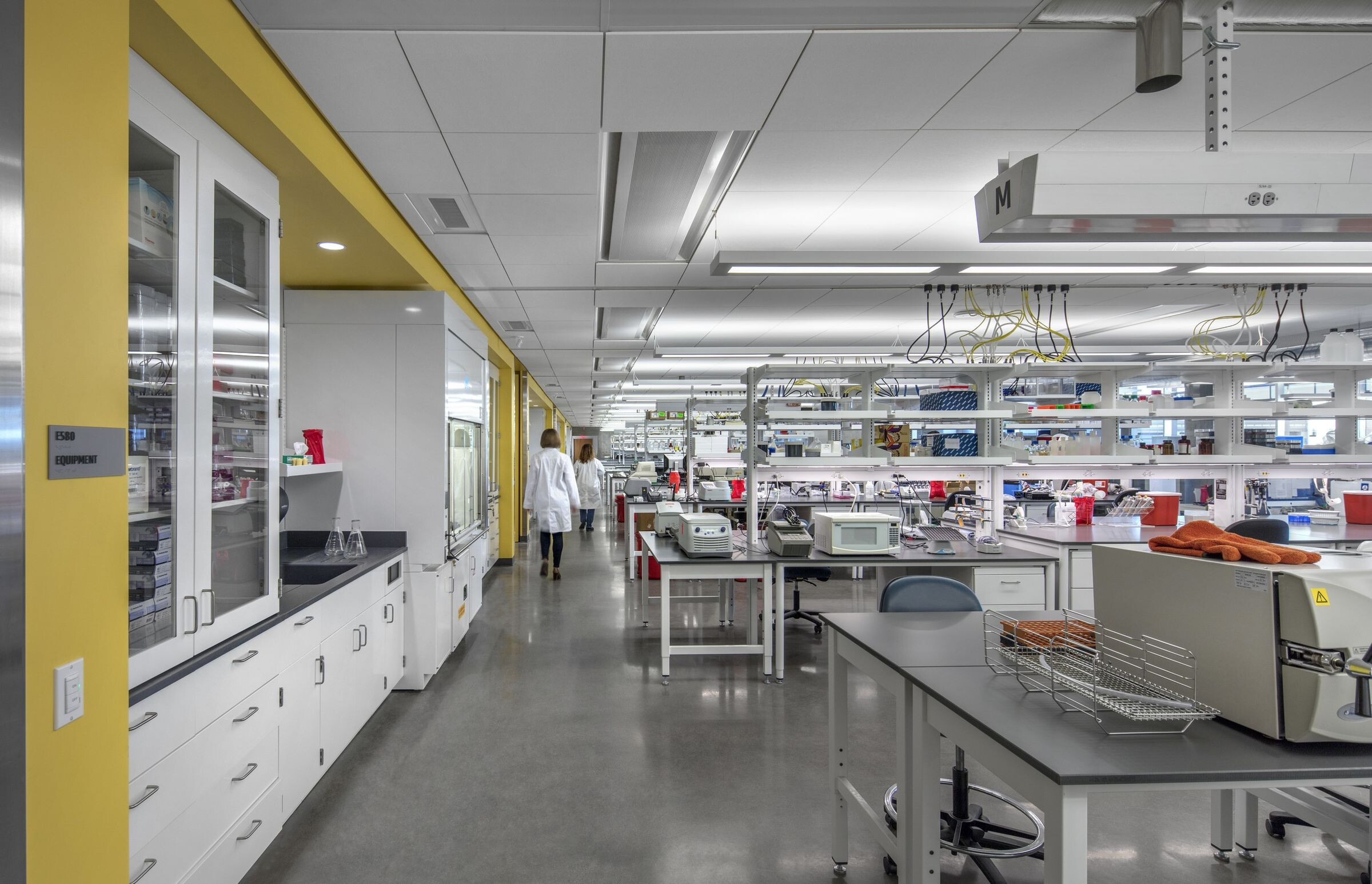The 10-story Biomedical Sciences Partnership Building (BSPB) designed by Los Angeles-based CO Architects with Ayers Saint Gross of Tempe, AZ is the tallest addition to the Phoenix Biomedical Campus. Programmed, designed, and constructed in only 27 months, the 245,000-square-foot, $99-million laboratory complex allows University of Arizona research scientists to collaborate with local healthcare providers and private companies to find new medical cures and treatments.
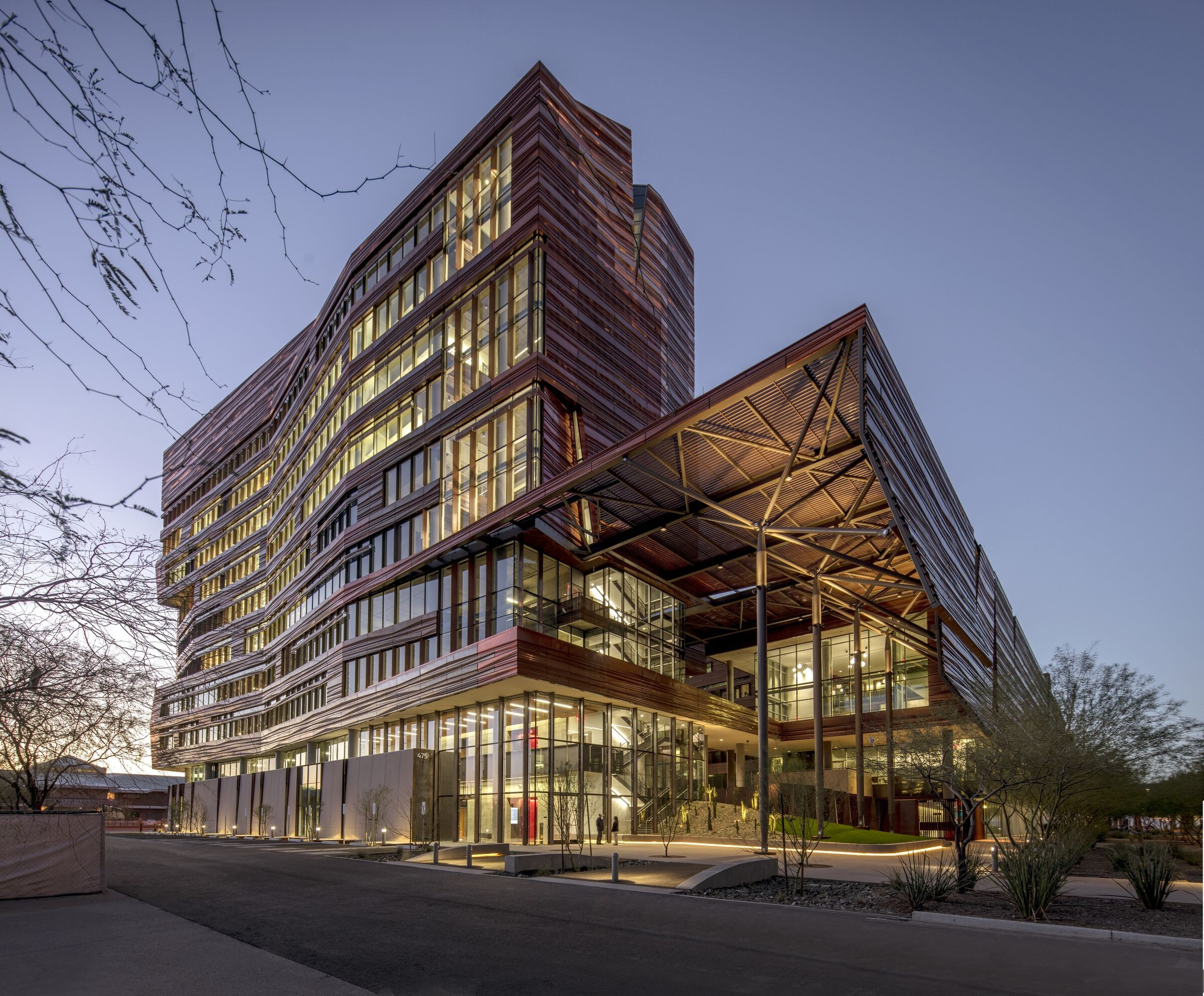
BSPB is located to the north of the Health Sciences Education Building (HSEB)—also designed by the same architect and contractor team—on the University of Arizona’s biomedical research campus in downtown Phoenix.
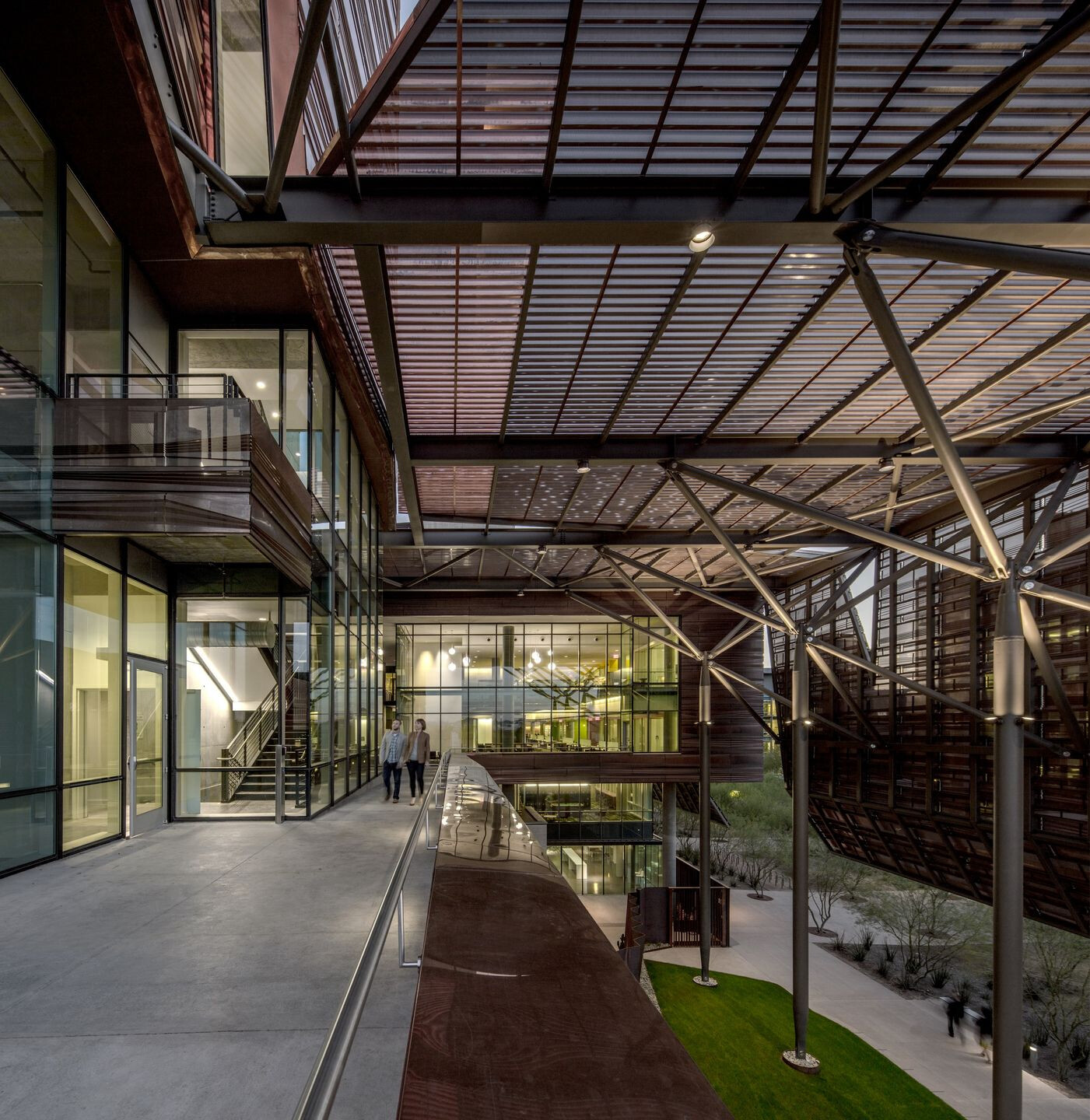
The award-winning HSEB, with learning facilities and amenities shared by the University of Arizona’s College of Medicine and Northern Arizona University’s Allied Health Program opened in 2012. Its distinctive, copper-clad design draws inspiration from the region’s mountains and canyons.

Like the education building, the newer biosciences structure is clad in folded copper panels, but its exterior, through pronounced setbacks and projections, presents a different physical interpretation of the tall, cleft, desert rock formations. Because the same team had conducted extensive studies, computer modeling, and mockups for the copper skin on HSEB, they were able to quickly apply their knowledge to the new building.
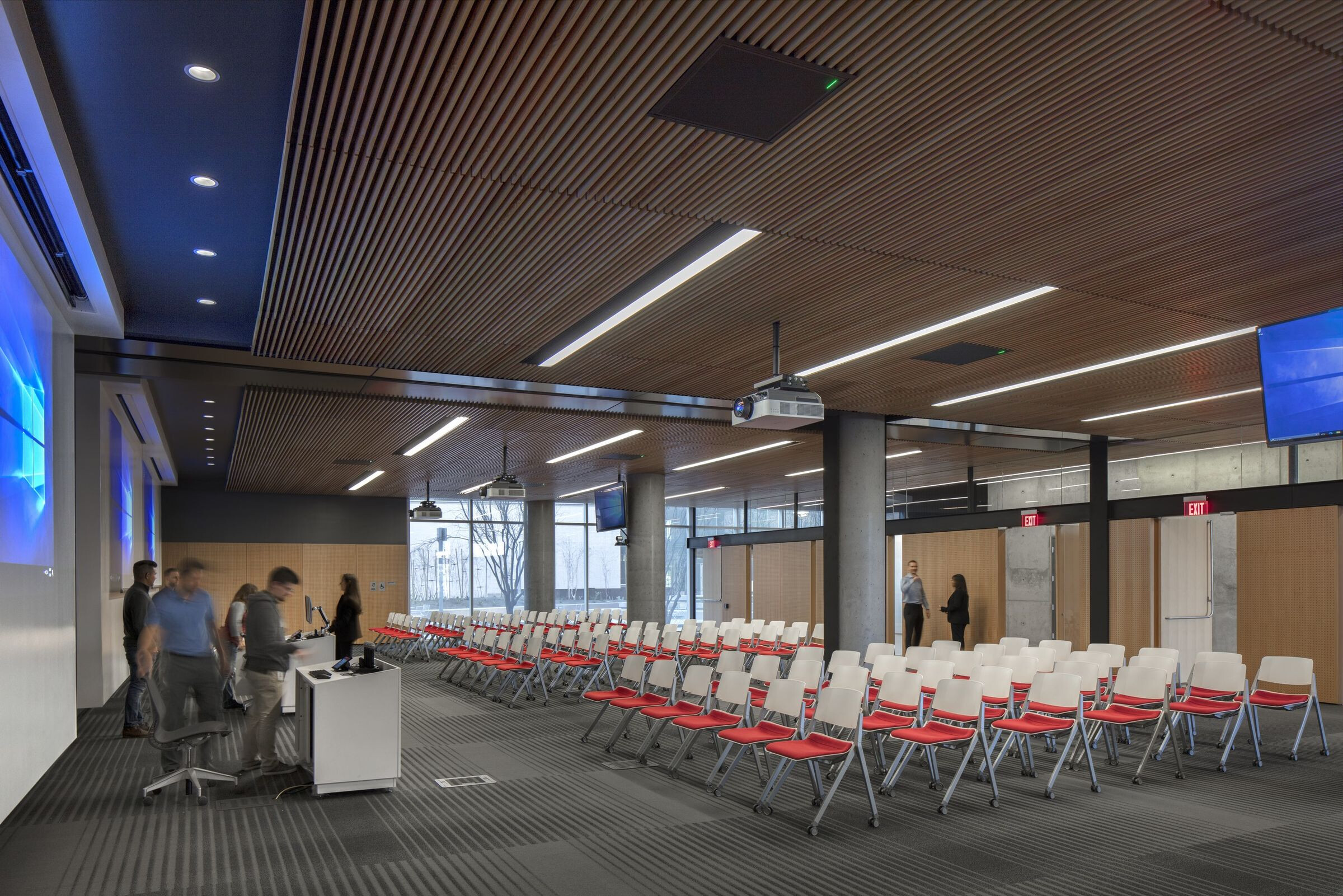
Cantilevered floors extending increasingly outward at the top of the building shade the lower levels. Windows are mostly limited to the north and south sides of the building to control daylight and conserve energy. The space between the paired campus structures is richly landscaped with native desert plantings, such as a canyon floor would be, to create a shady courtyard. A bridge at the third floor connects the two related buildings.

BSPB is organized to encourage collegiality, collaboration, and customization. Open offices at the north perimeter take advantage of daylight and views, and are visually connected to labs that support neurological, cardiovascular, cancer, genomic, and nano-bioscience research. Highly flexible lab support spaces were designed as “wet garages” and are arranged next to the windows on the south side. Mechanical equipment is housed on the windowless east and west ends, rather than on the rooftop, protecting the occupants from the intense Phoenix sun.
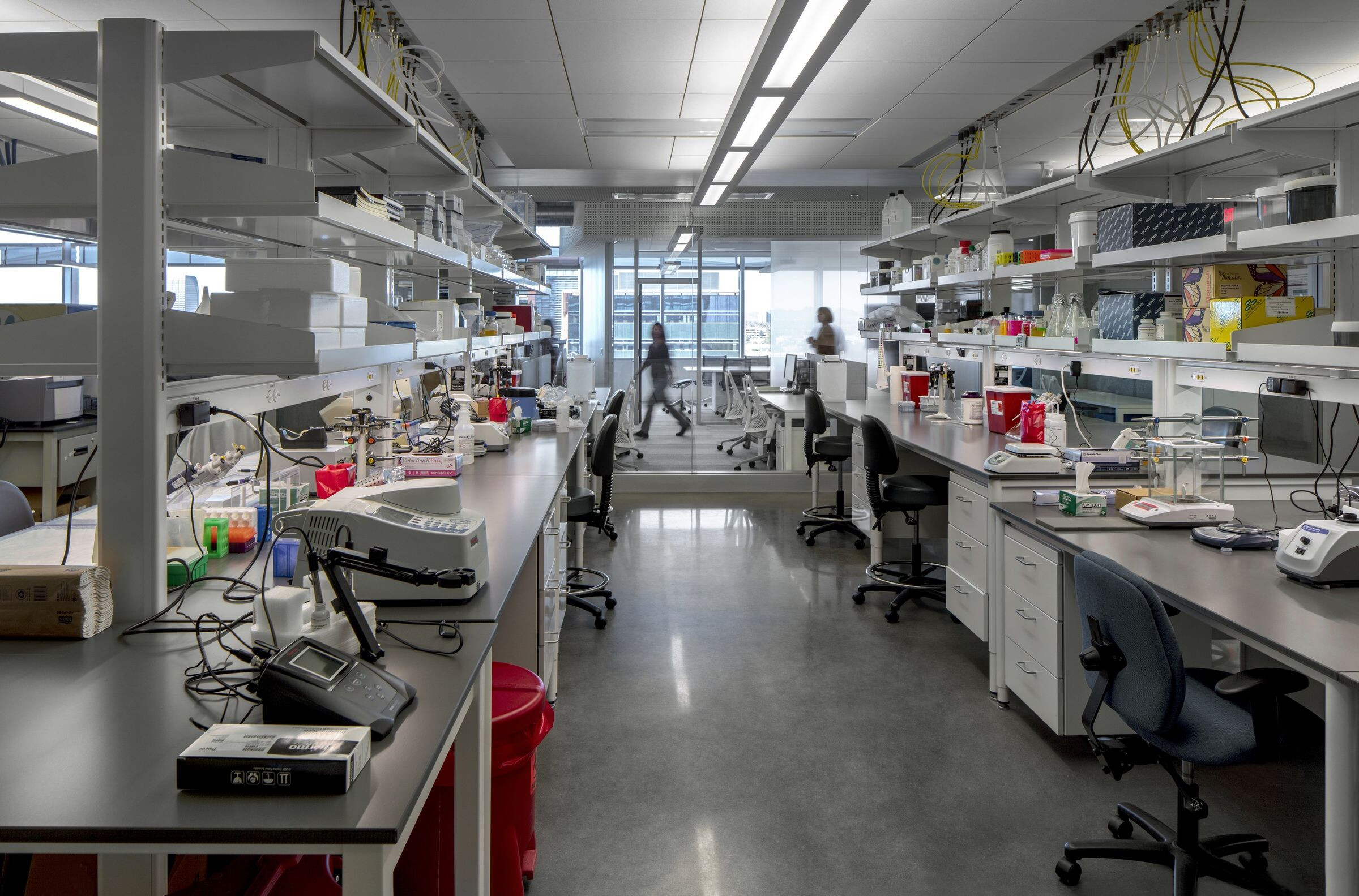
At the northwest corner of the building, researchers and industry representatives meet on laboratory floors to exchange ideas in two-story glass-enclosed spaces designed with meeting rooms, lounges, and kitchenettes. A sheltering entrance porch on west side of the building faces the central campus green. Extending northward from the portion of the building containing lobbies, café, library, and meeting spaces—nicknamed “The Mixing Bar”—the entrance forms a shaded gathering space like an outside lobby. A linear gallery connects the lobby to the courtyard, and acts as a pre-function space for a multi-purpose meeting center able to accommodate groups ranging from 50 to 200 persons.
The LEED Silver-certified building institutes various sustainable features, such as copper paneling made of 95% recycled materials, passive orientation, cascade air supply system, chilled beams in labs and open offices, and LED lighting throughout the facility.
